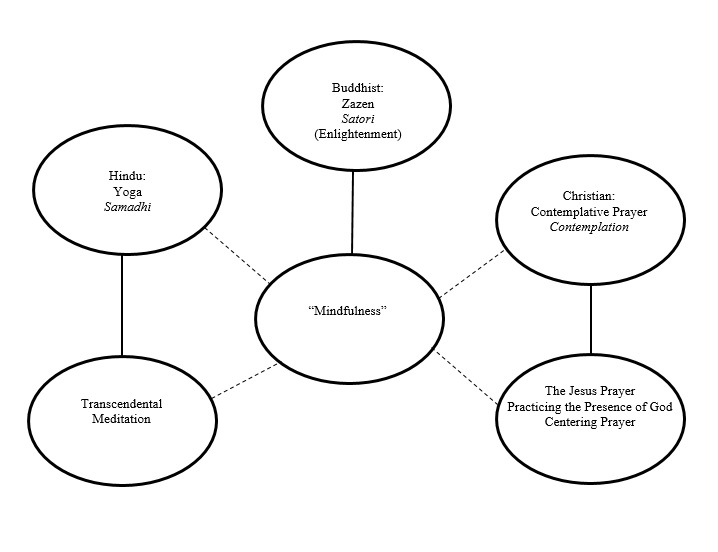Mindfulness.
That’s a great word, isn’t it? I was recently giving a presentation on Mindfulness to the Catechumenate program at the University of the South. After a brief introduction, we broke up into small groups, and each group went through the basic method that I’ve written about here and in my book, Just Begin. In that venue, I joked a bit about how mindfulness has become one of those great buzz-words like love or spirituality in that its meaning is basically whatever you make it (you know – like reality in politics, but I digress…).
Anyway, I just got a chance to mention that part of the appeal of mindfulness is that it connects so readily to so many different world religions and various recent spiritual movements. I noticed sincere interest at that point so I briefly noted a few points, but I couldn’t spend much time there. Now, I want to draw those lines out a bit more fully.
To begin, the current version of mindfulness most directly comes out of Buddhism, but its only as connected to Buddhism as current permutations of yoga are connected to the original spiritual practices of Hindu yogis. Still, if you’ve read any of my writing before, you probably already know that my “thing” is spiritual borrowing. From that side, I’m always interested in drawing connections among different mystical practices and religions. Mindfulness might be a popular recent word, but it connects to meditation practices in a variety of faith contexts (and in the modern generic version, no faith is necessary). As such, mindfulness is a wonderfully flexible central axis that connects to a variety of faith traditions. If you like the basics seen here or the body scan, but you’d like something that better complements your particular tradition, then you’ve come to the right place.
For the Buddhist connection, you might want to start with the writings of Thich Nhat Hanh and the concept of zazen (sitting meditation) and Satori (enlightenment).* I recommend starting with The Miracle of Mindfulness, particularly if you are coming from a non-Buddhist cultural context. Hanh really explains mindfulness simply and leaves you feeling like you can actually do it. For the Hindu connection, you may want to look into the concept of Samadhi or the practice of Transcendental Meditation for the closest variant. For the Christian connection, you may want to check out the concept of contemplation and the modern practice of centering prayer, but there are also connections with older practices like the Jesus Prayer and Practicing the Presence of God.
There are many branches to mindfulness, but I think it’s helpful to think of them all as part of the same “tree” of spiritual practice. Hmmm…if we all can use the same basic practice in or out of our personal religious context, then are we so far apart after all?
*Zazen and Satori are the Japanese (i.e., Zen Buddhist). In the original Indian Buddhism, yoga and Samadhi would be used.

